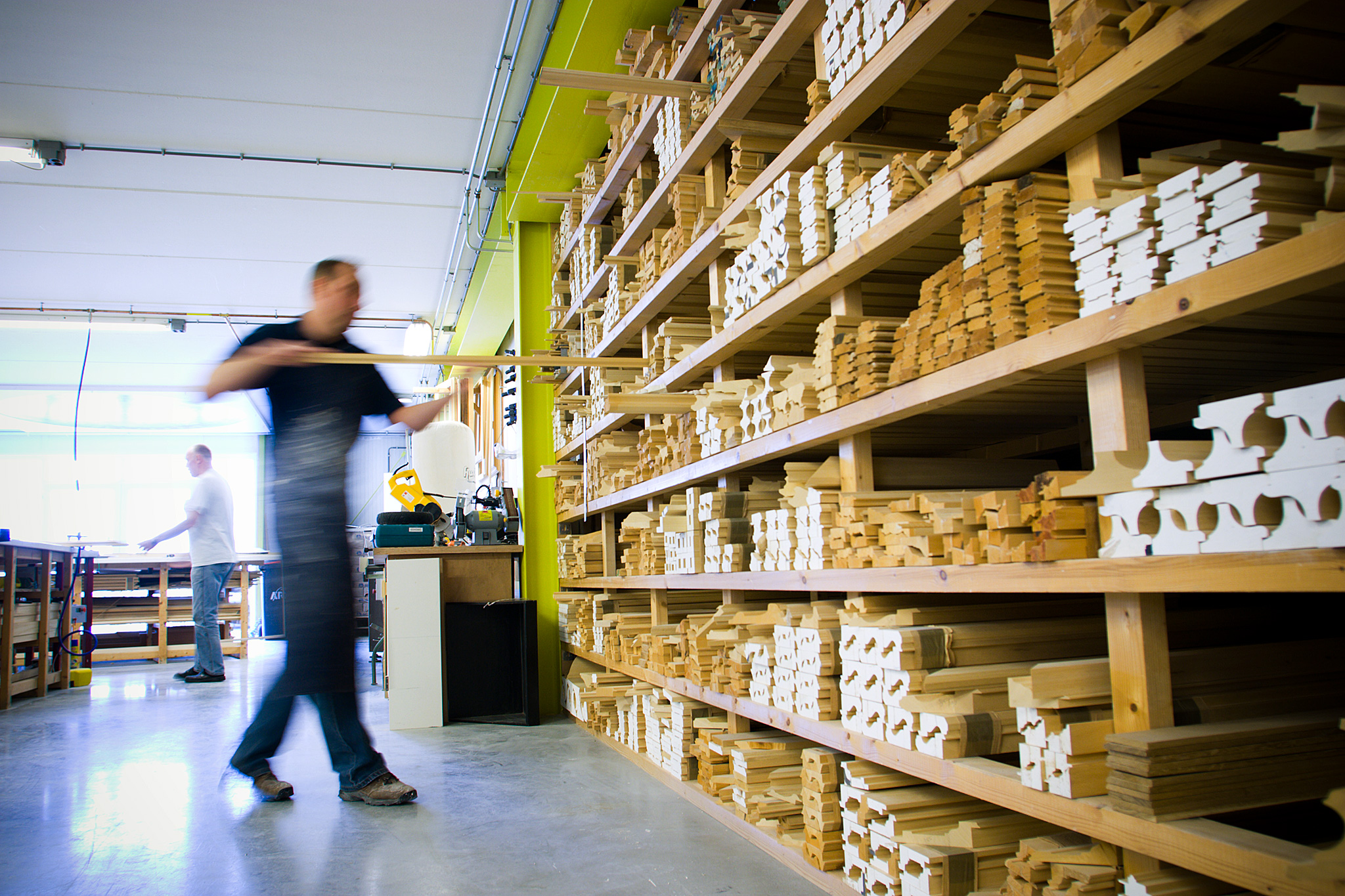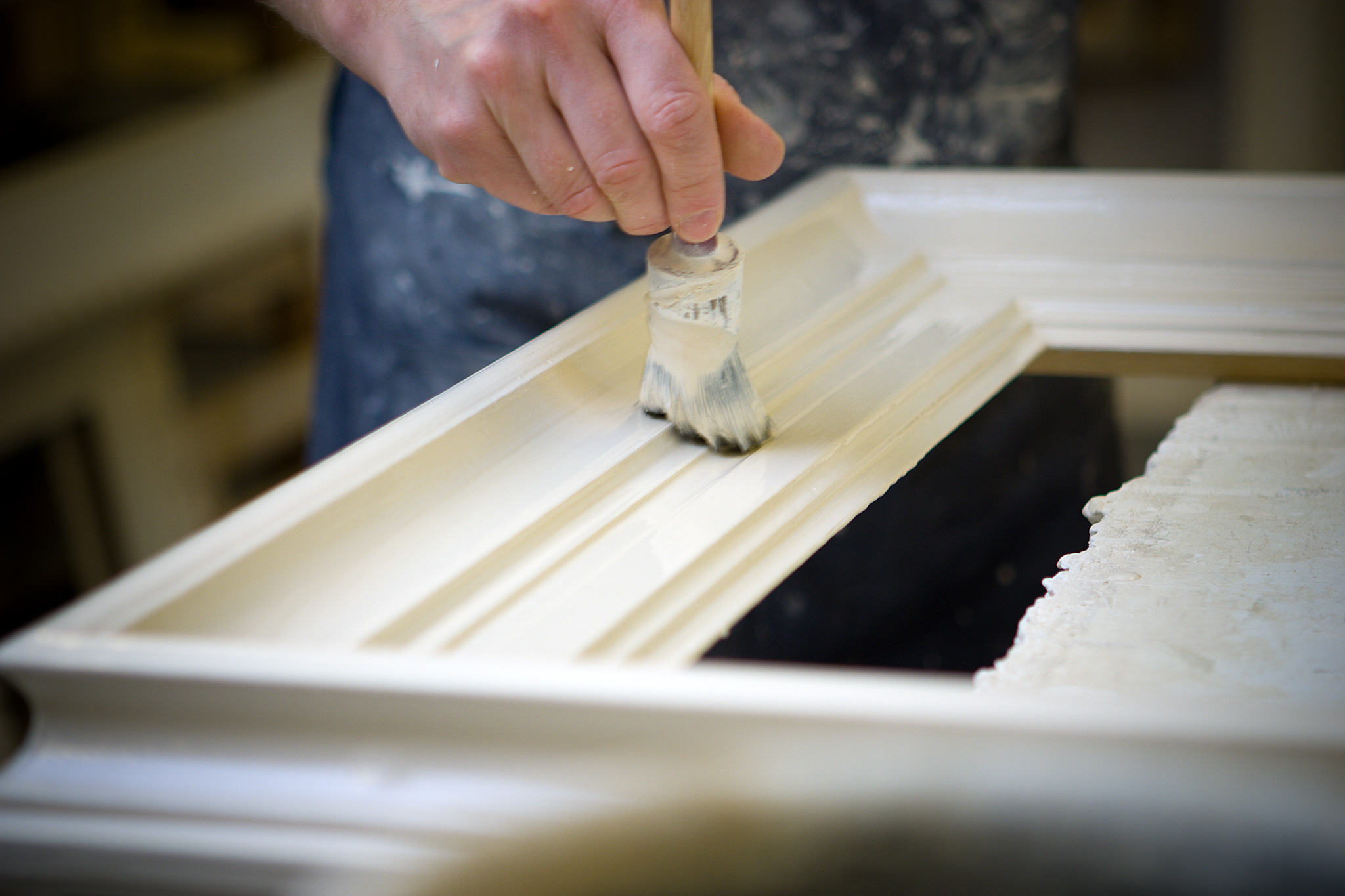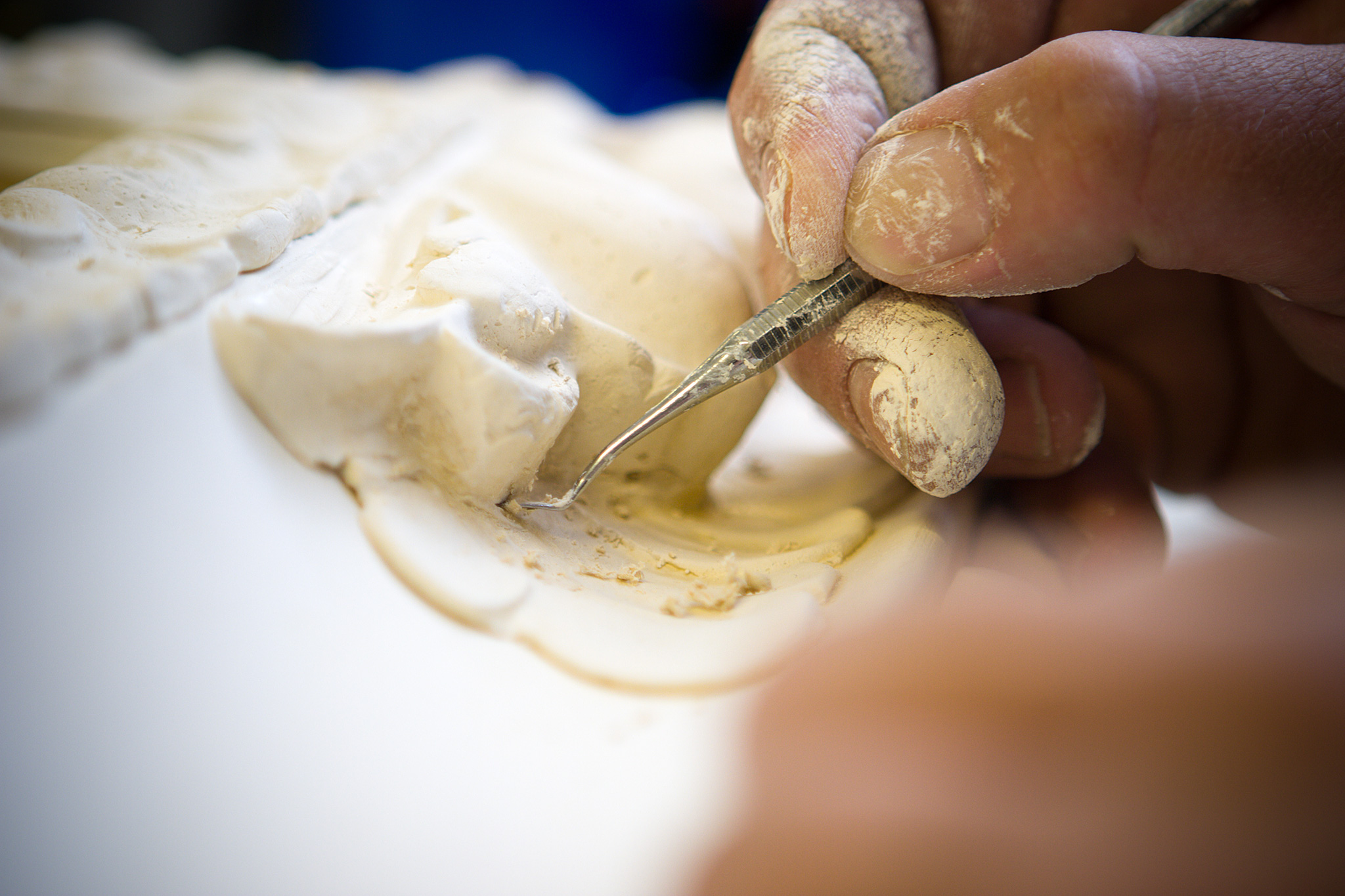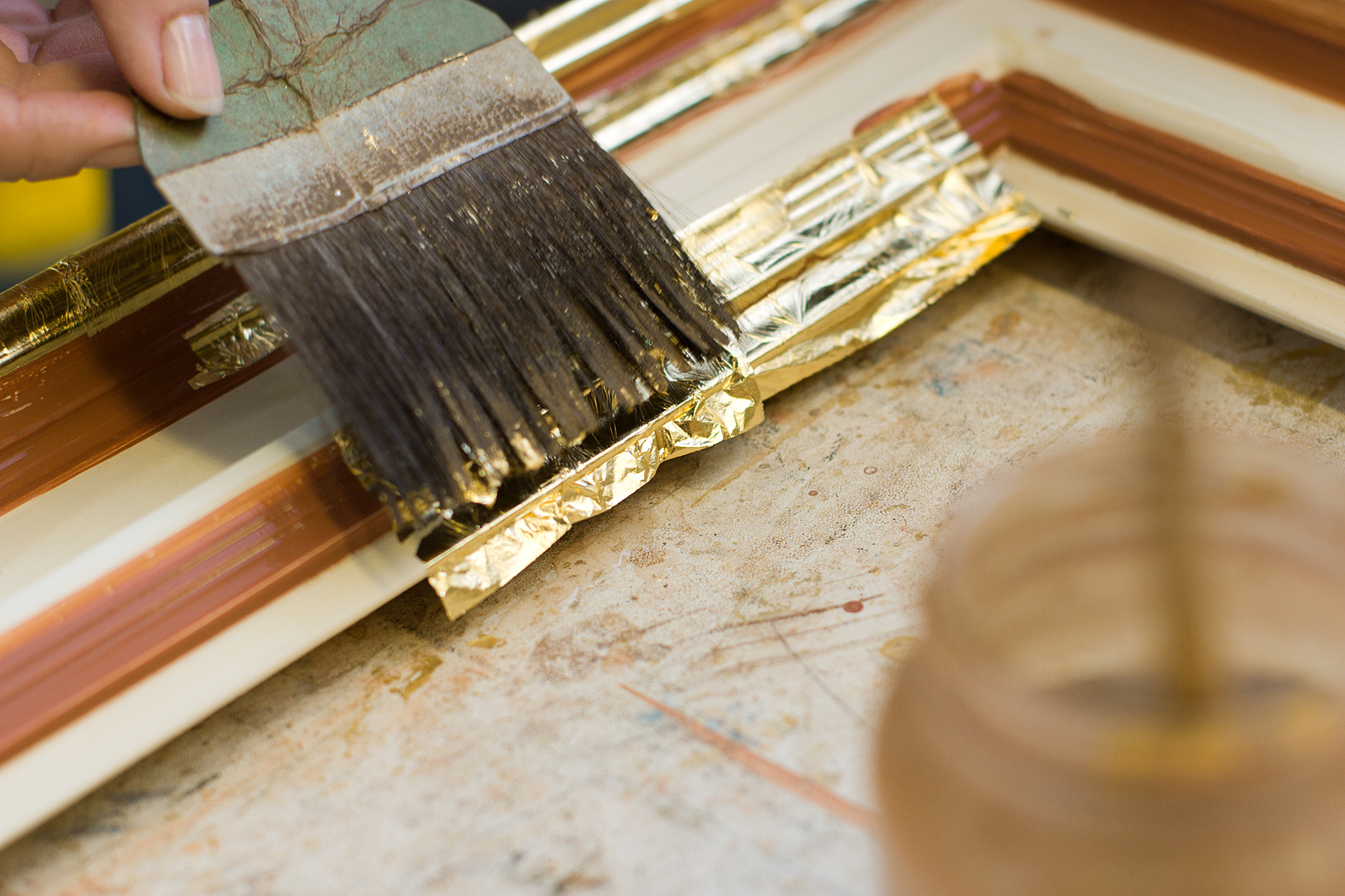Classic gold ornament frame – from wood to gold

The base
Wood is necessary to make frames. Not just any old wood, but material exclusively selected for specific qualities, such as inflexibility, hardness, colour and the amount of moisture it can absorb before warping. The planks of raw wood are first cut into shaped lengths.
The shaped lengths are then sawn to size for a complete frame. This is accurate to within a millimetre, so that the maximum surface of the painting remains visible. We use different types of wood for our frames, and the most frequently used are: abachi, lime, oak and rosewood.
Chalk layer
The wooden frame forms the base for further finishing, such as French polishing, staining or gilding. If the list is to be gilded, we first apply a layer of chalk. This is a mixture of chalk, water and gelatine.
This chalk layer is applied warm and sanded several times, so that a taut surface is created and the corners are smooth throughout. This process is also the basis for ornamentation.


Ornamentation
Ornamenting can be done using a roller or mould. Our moulds are hundreds of years old, and originally came from the firms Sala in Leiden and Poelgeest in Amsterdam. The moulds in our collection probably form one of the largest museological and still complete collections in the world. This allows us to make exceptional frames, in hundreds of different styles, from very small up to 50 cm wide.
The ornaments are made from paste, which is a mixture of chalk, rabbit-skin glue, water, paper and a little bit of linseed oil, and looks a little bit like putty. We knead it by hand and press it into the mould. When it is dry, we remove the paste from the mould, and now have a positive ornament which we can glue onto the frame. The decorated frame is sanded smooth with extremely fine sandpaper.
Gold leaf
The frame is now provided with a bolus layer. This is a sort of clay mixed with gelatine. Bolus can be yellow, red, brown or black and will ultimately help determine the look and adhesion of the gilding to the frame. The bolus layer also ensures that the gold leaf can be polished later.
We gild our frames with 23-carat gold leaf. The frame is made wet bit by bit, and the gold leaf laid on it. We cut the gold leaf to size on a gilded cushion and apply it to the frame with a special applicator. Once it is dry, we polish the gold leaf with an agate stone, which brings out a beautiful shine.


Company secret
We now have a beautiful smooth frame. However, in order to make it look like a frame that has aged, we give it further treatment. When we are done with this, the new frame is hardly distinguishable from an old frame.
This finish is an art in its own right and one of the most important parts of the entire process. The tried and tested method which we use is therefore also a very well-kept company secret.
